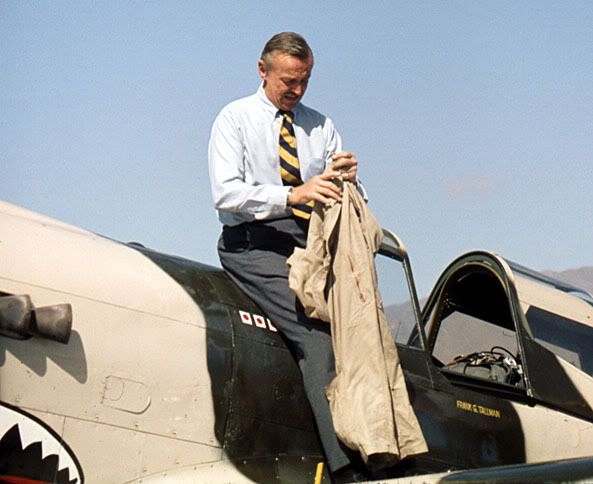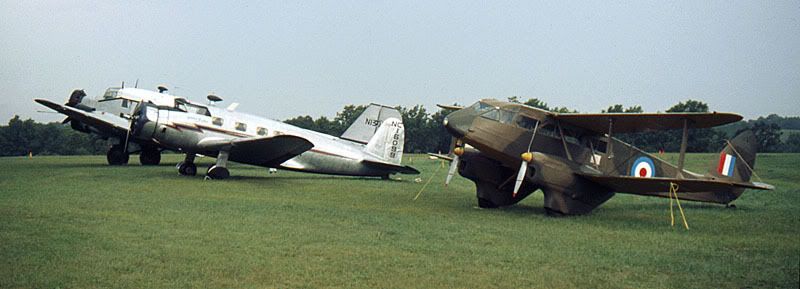 British machines were the next most prominent. This was Supermarine Attacker F.1 WA486.
British machines were the next most prominent. This was Supermarine Attacker F.1 WA486.
Blackburn Firebrand TF.4 EK829. Visible behind this aircraft are two Italian-registered Cessna Cranes, I-CISA and (I think) I-LNOT. They bear crests on the nose for something called the "C.I.A.B."
 WP227 was the prototype for the NF.2 night fighter version of the de Havilland Venom fighter. It would be a two further years before the Venom night fighter would enter operational service.
WP227 was the prototype for the NF.2 night fighter version of the de Havilland Venom fighter. It would be a two further years before the Venom night fighter would enter operational service. Also not yet in operational service was one of the stars of the show, de Havilland's Comet airliner. G-ALYP was the demonstrator and this was one of the aircraft, when in BOAC service in 1954, that broke up in the air due to metal fatigue with the loss of all 35 aboard, leading to the withdrawal of the Comets from airline service. The wreckage of this machine, recovered from the sea floor off Italy, still exists and was recently re-examined to confirm the initial diagnosis of metal fatigue.
Also not yet in operational service was one of the stars of the show, de Havilland's Comet airliner. G-ALYP was the demonstrator and this was one of the aircraft, when in BOAC service in 1954, that broke up in the air due to metal fatigue with the loss of all 35 aboard, leading to the withdrawal of the Comets from airline service. The wreckage of this machine, recovered from the sea floor off Italy, still exists and was recently re-examined to confirm the initial diagnosis of metal fatigue.
This DC-3 was operated by S.N.C.A.S.O. as a test bed for small jet engines. That growth below the center of the wing is, according to the signage, a jet weighing 150 kg.
 Poland's airline Lot brought along a rare iron-curtain visitor at the height of tensions between the east and west blocs, an Ilyushin Il-12. These had been in service for about two years at the time, and no doubt created quite a sensation at the show.
Poland's airline Lot brought along a rare iron-curtain visitor at the height of tensions between the east and west blocs, an Ilyushin Il-12. These had been in service for about two years at the time, and no doubt created quite a sensation at the show.The partial DC-3 visible in the background is F-BEIS, which has a fascinating history. Originally it was C-53 42-68819, serving with the 8th Air Force during World War Two where it likely participated in the D-Day drops. After the war it went to Sweden as SE-APG, then by the time of this photo was with S.N.C.A.S.O. and named "Lucille". It later did stints in the French and Yugoslavian air forces (the only C-53 ever to serve with the latter), was on the US civil register for a time as N8071Z, and in 1981 was sold to the South African Air Force which converted it to turboprops. It appears that it still exists today.
An Avro Anson also appears in the distant background of this shot.


























